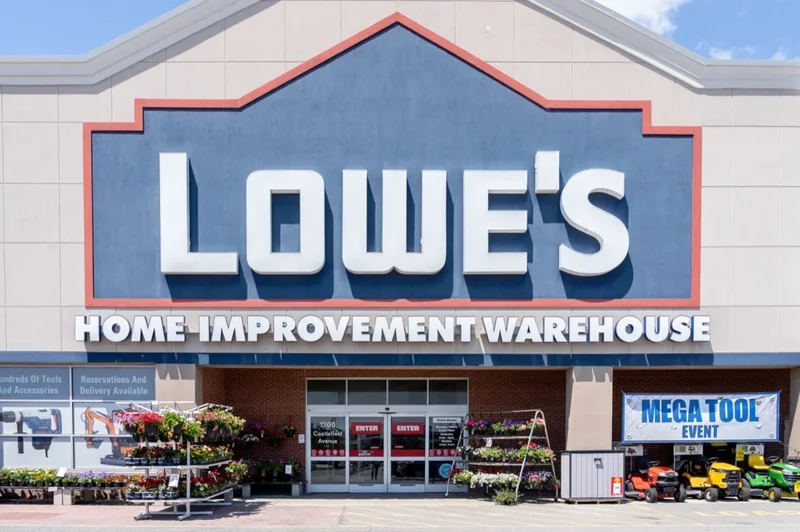Generated Title: Lowe's: A Fresh Coat of Paint on a Cracking Foundation?
The Top-Line Numbers
Lowe's just released its Q3 2025 earnings, and the headline numbers are… well, mixed. Total sales are up, hitting $20.8 billion compared to $20.2 billion last year. That's a 3% jump. Comparable sales eked out a 0.4% increase, driven by an 11.4% surge in online sales and growth in both home services and Pro sales. So far, so good, right?
But here's where the data starts to look a little less rosy. Diluted EPS (earnings per share) actually decreased, falling to $2.88 from $2.99 in Q3 2024. The company is pointing to $129 million in pre-tax expenses related to the acquisitions of Foundation Building Materials (FBM) and Artisan Design Group (ADG) as the culprit. Okay, fair enough. They even provide an "adjusted" EPS of $3.06, which is a 5.9% increase year-over-year.
However, this is where the numbers get a little slippery. It's common practice to present adjusted earnings, but we need to ask: are these adjustments really giving us a clearer picture, or are they obscuring something? What exactly are those “transaction costs, purchase accounting adjustments and intangible asset amortization related to the acquisition of FBM and ADG." Are those costs a one-time deal, or are they going to be a persistent drag on earnings?
The Devil's in the Outlook
The real kicker is Lowe's updated full-year 2025 outlook. While they've nudged up the total sales forecast to $86.0 billion (from a previous range of $84.5 to $85.5 billion), they've lowered the adjusted operating margin to 12.1% (previously 12.2% to 12.3%) and are now projecting adjusted diluted EPS of approximately $12.25 (previously $12.20 to $12.45). Lowe’s beats on quarterly sales, but lowers full-year profit forecast amid economic uncertainty
In plain English: they expect to sell more stuff, but make less money on each sale.

They are blaming the "ongoing uncertainty in the macroeconomic environment." Which, let's be honest, could mean anything, from inflation fears to housing market jitters. The updated outlook also includes expectations for FBM. So, is FBM not performing as expected? Details remain scarce, but the lowered profit forecast speaks volumes.
And this is the part of the report that I find genuinely puzzling. The company is touting growth in online sales, home services, and Pro sales. These are generally higher-margin areas. So, why isn't that translating to better profitability? Are they offering deep discounts to drive sales volume? Are costs increasing faster than revenue? I've looked at hundreds of these filings, and this particular combination of factors is unusual.
The Lowe's press release states, "The company remains committed to a disciplined capital allocation strategy focused on driving long-term shareholder value." During the quarter, they invested $8.8 billion for the acquisition of FBM and paid $673 million in dividends. The problem is that the balance sheet tells a different story.
Lowe's has significantly increased its long-term debt. Long-term debt, excluding current maturities, jumped from $32.906 billion to $37.498 billion. That’s nearly a $5 billion increase. This could mean that Lowe's is taking on more debt to fund its acquisitions and shareholder payouts. It's a classic move: juice the stock price in the short term, but potentially saddle the company with long-term liabilities.
So, What's the Real Story?
Lowe's is trying to paint a picture of steady growth, but a closer look at the numbers reveals a more complex situation. While sales are up, profitability is under pressure, and the company is taking on more debt. It feels like they are rearranging deck chairs on the Titanic. Unless Lowe's can find a way to improve its margins and manage its debt load more effectively, the stock might be a risky bet.
